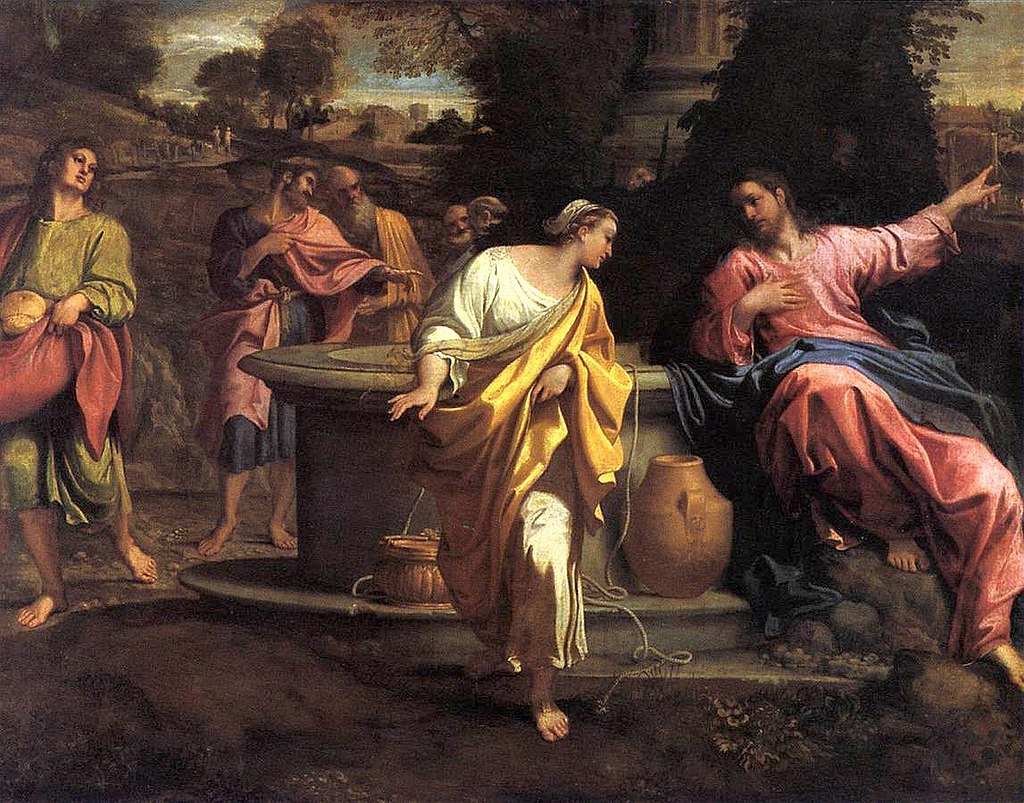The woman said to him, “I know that Messiah comes, he who is called Christ. When he has come, he will declare to us all things. ”Jesus said to her, “I am he, the one who speaks to you.” At this, his disciples came. They marveled that he was speaking with a woman; yet no one said, “What are you looking for?” or, “Why do you speak with her? ”So the woman left her water pot, went away into the city, and said to the people, “Come, see a man who told me everything that I did. Can this be the Christ?” They went out of the city, and were coming to him. In the meanwhile, the disciples urged him, saying, “Rabbi, eat.” But he said to them, “I have food to eat that you don’t know about.” The disciples therefore said to one another, “Has anyone brought him something to eat?” Jesus said to them, “My food is to do the will of him who sent me and to accomplish his work.
John 4:25-34
An intensely beautiful exchange just took place between Christ and this unlikely woman where He reveals himself to be the Messiah. He shows his omniscience in knowing the details of her hard and sin-stained life, He declares himself to be the fountain of living water, and He promises that same spiritual life to those who come to Him. The woman, overcome with excitement runs, leaving her jar of water, to tell the good news to anyone who would hear it. Meanwhile, His disciples come back from buying food in town, totally clueless as to what just happened. They think, “Huh, that’s weird that Jesus was talking to that woman. I wonder why she’s running?” But they don’t bother to ask Him about it, and they tell Jesus to eat some lunch. And then, when He tells them “He has food to eat that they don’t know about,” they are all confused. “Wait, did you bring Him something to eat?” This part of the story is actually funny in its humanness.
This moment of transition is what Caracci captures here: Jesus’ final words to the woman, her beginning to run, and the disciples returning. You can almost hear them complaining about how hot it is, and the fact that they have no idea what Jesus just did, and still don’t as He starts to explain it to them, is kind of hilarious because it is so relatable. But that juxtaposition of huge spiritual revelation and the ordinary routines of everyday life, like eating lunch, is so gospel! That is what characterizes Jesus’ entire life, and defines the reality of the “word becoming flesh and dwelling among us.” That interplay of life-transforming spiritual power and the sweaty, hungry, repetitive physical existence of life on earth. It is also the way Christians live now – we are spiritual and physical beings, we are connected to this source of living water and are being transformed into His glorious image, and we’re also making lunch and doing laundry and paying bills and going to the dentist… it is really weird when you stop and think about it. And sometimes, we are so wrapped up in the benign physical life tasks that take up most of the time in our day that we don’t realize the huge work that Jesus is doing in us or around us, just like these disciples didn’t even realize that they just missed one of the most important conversations to be recorded in scripture.
But He is still so gracious to explain things to us and include us in his work anyway, just like the disciples. He even goes on to tell them in this passage about how the field is ripe with harvest and He’s sending them to reap… them, the ordinary, clueless ones. But that is how Jesus works! He saved the world by living an ordinary-yet-extraordinary existence, and invites us to come to Him for new life and do the same.
Annibale Caracci, a hugely influential Baroque artist, conveys that joy and liveliness in this work and his others, with his bright colors, full modeling, and the synthesis of Renaissance idealistic beauty and Baroque dynamism. Based on his composition, he too was obviously thinking about the juxtaposition in the story and does an incredible job of balancing the full big picture and creating a ‘snapshot’ effect. For example, he sums up much of the whole conversation between Jesus and the woman in Jesus’ gestures. He is pointing to the distance, probably in reference to the mountains of worship he and the woman discuss early in their conversation, and at himself, probably when he says, “I am He”. He also depicts the woman as a freeze-frame of her starting to run, which would have come after those moments in the conversation. But it all works together, to create a work of art that is richer the more it is contemplated.
Original painting found in Pinocoteca de Brera, Italy
Want to see more? Like, follow & share https://www.facebook.com/comemeetjesus.art
Shop coffee table books here. Use promo code S50 for 50% off!
